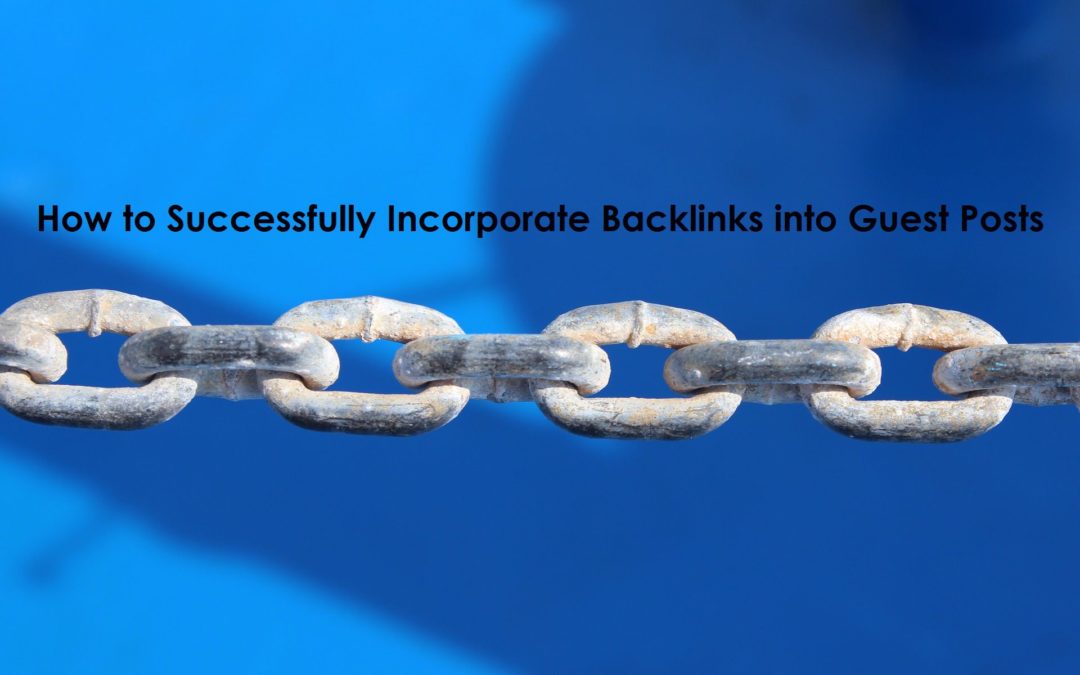Last Updated on March 9, 2020 by Anthony
Guest posting is the practice of writing blog posts and informational articles to be posted on sites other than your own. It is a strategy designed to do a number of things: generate traffic for your website, establish you as an authority in your industry, and engage readers with information they can put to use.
The most successful guest posts include backlinks to your site. Additional outbound links also help by adding credibility to your post. Still, the biggest SEO benefit of guest posting is creating content that links directly back to your website – which is the goal of SEO anyway.
Would you like to learn how to successfully incorporate backlinks into guest posts? There is more to it than simply adding a hyperlink to some random anchor text. Keep reading to learn everything you need to know about doing it right.
Build Up Your Own Site Before Even Thinking of Backlinks
Given that backlinks point back to your site, there is something you should do long before you ever create your first backlink: build up your own site. There is no point in driving traffic to your site if visitors will find a train wreck when they get there. If it helps, think about it in terms of selling your home.
Before your estate agent starts bringing people around to view your property, you take the time to fix the place up and make it look presentable. You might even go the extra mile to enhance its strongest selling points. Why? Because nobody will be interested in buying a home that looks like a dump. Your website works the same way.
Creating backlinks that send visitors to a poorly designed and content-bare site only serves to turn those visitors off. If they are not impressed by your site upon arrival, they will quickly move on to another online destination.
Create Worthy Content
A big part of building up your own site is creating worthy content. This is absolutely critical. Creating worthy content is not negotiable given the intelligence of modern search algorithms. Simply put, Google algorithms can distinguish between worthwhile content and junk. A backlink that links to junk will suffer in Google’s analysis and ranking.
The goal is to create content that is actually worth linking to. In a best-case scenario, you would have linkable content directly related to the guest post you are linking from. For instance, let us say you decide to write a guest post explaining the benefits of using a mortgage broker. Hopefully you are involved in the mortgage industry in some way, shape or form. Moreover, the backlink in that piece should link to content that is directly related to mortgage brokers.
Choose Strong Anchor Text
With the preliminaries out of the way, it is time to write a guest post. Assume you will insert a single backlink and one or two additional outbound links in your post. The anchor text for your backlink should be strong anchor text that in some way relates to the keywords and phrases you rely on to drive traffic to your site.
Long tail keywords are best for creating strong anchor text. Again, let us use the mortgage broker concept as an example. One of the long tail keywords your website focuses on might be something like ‘registered mortgage brokers’. Use that phrase in your anchor text. Google will ‘make note of it’ and check it against the linked content on your site. If relevance is found, your site gets credit for it.
While we’re at it, make sure your anchor text flows naturally within the context of the paragraph in which it is found, as well as the article in general. Do not force the anchor text in a way that doesn’t sound natural. Google algorithms can pick up on that. Forced anchor text is not only a dated concept, but it can actually harm search engine ranking as well.
One Link, Please
The general rule of backlinks is to insert one link per piece, regardless of length (we are talking links back to your site here, not other outbound links). Anything more than that and search engine algorithms may interpret the piece as being overly promotional.
For the record, this is yet another reason you need to have a strong website and relevant content to link to. You get one shot per post. Give it your best shot by making sure you use strong anchor text to link back to a relevant piece of content readers will find immediately useful.
Thus far we have mentioned a couple of times about including one or two additional outbound links. Why do this? Because these have the effect of adding further legitimacy to your guest post. These days, Google works extremely hard to make sure their search engine results lead to only high-quality content. They desperately want readers to stay away from junk. This is where additional outbound links become extremely important.
Just like your backlink refers back to relevant content on your website, outbound links should also be relevant in some way. The more specific you can make the relevance the more weight outbound links give your piece. For maximum effectiveness, make a point of linking to authoritative government, educational, and commercial sites. Do not link to any of your competitors.
Hopefully you now have a good understanding of how to incorporate backlinks into your guest posts. If you would like to know more, or you need assistance creating high-quality guest posts that get results, we would love to hear from you. The Connotations team routinely produces high-powered content for clients in nearly every industry. We can do the same for you.

